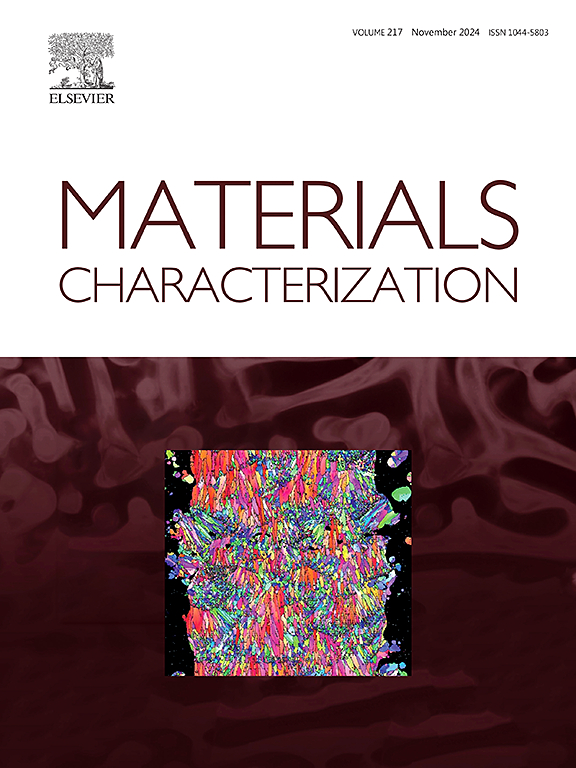The corrosion resistance improved by the coarsening precipitations containing Zn in the Al-4.0Cu-1.0Li-Mg alloy
IF 4.8
2区 材料科学
Q1 MATERIALS SCIENCE, CHARACTERIZATION & TESTING
引用次数: 0
Abstract
The relationship between the microstructure characteristic evolution, electrochemical behavior and corrosion behaviors of the aging Al-4.0Cu-1.0Li-Mg alloy with and without the addition of Zn was investigated. A comprehensive evaluation of the correlation between microstructure and corrosion properties was conducted through a series of tests, including hardness tests, immersion tests, electrochemical tests, and microstructure characterization. The results demonstrated that the aggregation of Zn elements in the coarse T1 phases at the grain boundaries (GBs) was greater than that within the grains. The addition of Zn element to the aging Al-4.0Cu-1.0Li-Mg alloy was not affecting the phase type evolution and precipitation sequence of the aging phase. As the aging time was extended, the number of T1 phases in the grain increased, the number of θ′ phases decreased, the width of the precipitate-free zone (PFZ) narrowed, and the T1 phase at the GBs underwent a transformation from continuous to intermittent to continuous. The corrosion depth reduction of intergranular corrosion (IGC) during under-aging (UA) stage and diminished the corrosion susceptibility of exfoliation corrosion (EXCO) under peak-aging (PA) and over-aging (OA) stages in the alloy with Zn addition were attributed to the promotion of the addition of Zn element on the T1 phase coarsening and the reduction in potential difference between the Zn-containing coarsening phase at GBs or within the grain and the alloy matrix.
求助全文
约1分钟内获得全文
求助全文
来源期刊

Materials Characterization
工程技术-材料科学:表征与测试
CiteScore
7.60
自引率
8.50%
发文量
746
审稿时长
36 days
期刊介绍:
Materials Characterization features original articles and state-of-the-art reviews on theoretical and practical aspects of the structure and behaviour of materials.
The Journal focuses on all characterization techniques, including all forms of microscopy (light, electron, acoustic, etc.,) and analysis (especially microanalysis and surface analytical techniques). Developments in both this wide range of techniques and their application to the quantification of the microstructure of materials are essential facets of the Journal.
The Journal provides the Materials Scientist/Engineer with up-to-date information on many types of materials with an underlying theme of explaining the behavior of materials using novel approaches. Materials covered by the journal include:
Metals & Alloys
Ceramics
Nanomaterials
Biomedical materials
Optical materials
Composites
Natural Materials.
 求助内容:
求助内容: 应助结果提醒方式:
应助结果提醒方式:


